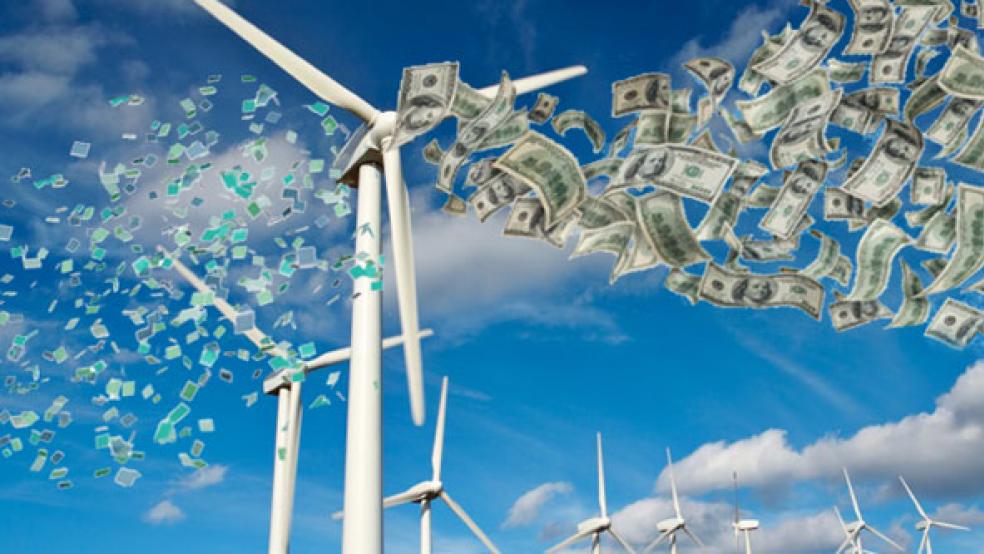Climate change is a new addition to the 30 “high” risks confronting federal government finances, according toa report issued Thursday by the Government Accountability Office. The risk list—updated for each session of Congress—targets programs with “greater vulnerabilities to fraud, waste, abuse, and mismanagement or the need for transformation to address economy, efficiency, or effectiveness challenges.”

The national debt isn’t among the top 30 risks, but one of its main drivers—Medicare—was flagged by the GAO. Pentagon mismanagement, crumbling roads, and Wall Street also make appearances.
“Identifying these high-risk areas isn’t good enough anymore; not when Washington refuses to act to reform what’s so clearly broken,” said Rep. Darrell Issa, chairman of the House Committee on Oversight and Government Reform that conducted a hearing on the report. “Seventeen areas on this year’s high-risk list have been on the list for more than a decade. Six have been on since the List first began in 1990.”
Here are 10 of the biggest threats according to the GAO.
Climate change —Global warming has stirred up more violent storms. The resulting damage puts the federal government on the hook for disaster relief, crop insurance, and flood insurance. Cleaning up and repairing the wreckage from last year’s Superstorm Sandy required the emergency expenditure of $60 billion, not too far from the total amount of funds obligated for disaster relief from 2004 to 2011.
Plus, in a surprise to most Americans, the government would to pay for repairs to its own extensive property holdings that are destroyed by violent weather. U.S. Comptroller General Gene Dodaro told the House committee that the federal government holds 29 percent of all property in the United States, including military installations along coast lines.
Medicare – The health care program paid out $555 billion in benefits, of which the government estimates $44 billion was improper. Eliminating those improper payments would equal more than half of this year’s sequestration cuts, and by some forecasts almost all of them. The GAO also noted that, “Medicare spending must be held much more firmly in check to sustain the program over the long term.”
Medicaid —About 7.1 percent of the payments in this health care program for low-income Americans are deemed improper. For a program with expenses covered by federal and state taxpayers, that roughly translates into $31 billion a year—with the federal share being $19.2 billion.
Private Pensions —The government’s Pension Benefit Guaranty Corporation insures the retirement benefits of 43 million private sector workers, but it’s running an accumulated deficit of $34 billion as more companies either shutter their pension plans or face bankruptcy.
Drug Shortages – Here is what the GAO said: “In recent years, hospitals and health care professionals have increasingly reported nationwide shortages of drugs, including those that are life-saving and life-sustaining.” The Food and Drug Administration does not systematically track possible shortages for medicine and treatments that would help cancer patients, among others. That means the hundreds of billions of dollars the government spends on health care isn’t getting maximized.
“It’s a very serious problem,” said Rep. Elijah Cummings, D-Md., the committee’s ranking member. “ A lot of Americans don’t even know about it.”
Food Safety —More than five federal agencies are supposed to ensure the safety of kitchen staples such as eggs. However, the fragmented nature of this regulation led to the recall in 2010 of 500 million eggs because of salmonella. Legislative reform and other actions have improved coordination, but the process is in its early stages. The need for recalls disrupt the economy and impose costs on companies.
Defense Spending – The Pentagon controls a budget of roughly $600 billion, but it’s struggling to manage its 555,000 facilities, cannot balance its own books, and has been unable to control costs when buying weapons.
Highways, Bridges and Rails—The government funds its highway system through an 18.4-cent tax on a gallon of gasoline. Because the tax is not pegged to inflation, the country is about $110 billion short of the money it needs to build and maintain roadways through 2022.
Social Security Disability –This $100 billion-plus program relies on outdated medical definitions for assessing whether an applicant is unable to work for medical reasons. It’s slated to be insolvent by 2016, as more and more claims are filed due to a tough job market.
Wall Street —The Dodd-Frank reforms that created new oversight of banks and financial markets is slowly being implemented by regulators, more than four years after taxpayers were committed to an $800 billion bailout of Wall Street. And the government has not resolved the fate of the two mortgage giants—Fannie Mae and Freddie Mac—it manages as a conservatorship since 2008. These two companies have thus far cost taxpayers $187 billion.




